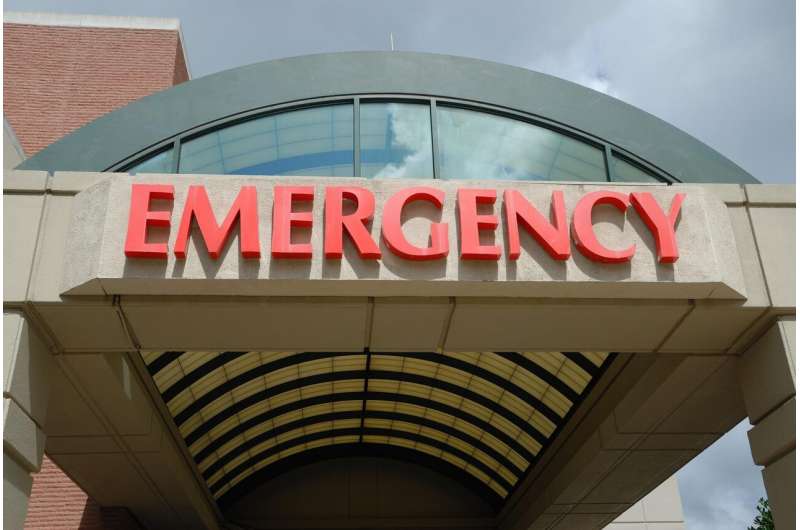Mental health, substance use issues prevalent among nonpsychiatric emergency room patients


A new study by Indiana University researchers has found that about 45% of patients who visit the emergency department for physical injuries and ailments also have mental health and substance use problems that are often overlooked. It also found that patients who reported high levels of suicidal thinking and plans were more likely to have frequent emergency department visits.
That’s why IU researchers, expanding on previous studies, used a computer adaptive test to screen for mental health and substance use problems in patients with nonpsychiatric complaints to examine whether emergency department visits are an important opportunity to screen for mental health issues.
With findings recently published in the Journal of the American College of Emergency Physicians Open, this is the most extensive study to use a multidomain mental health screening of nonpsychiatric patients in an emergency department. The test, known as the Computerized Adaptive Test-Mental Health, adjusts questions based on the respondents’ answers.
“The results of our study are really important for health care companies and health economists,” said Brian D’Onofrio, principal investigator on the study and a professor of psychological and brain sciences in the College of Arts and Sciences at IU Bloomington. “The people who keep coming back to the emergency department are high-risk patients. It’s a place where screening could be very helpful to identify people who are at high risk—whether for suicide, depression, anxiety, PTSD or substance use problems—and to get them the care they need.”
Along with follow-up care, mental health screening could also lessen the need for future visits, reducing burdens on emergency departments, he said.
To conduct the study, researchers asked randomly selected patients in an Indianapolis emergency department to complete this computer adaptive test that screens for five conditions: depression, anxiety, post-traumatic stress disorder, suicidality and substance use disorders. The study’s goal was to understand the prevalence of these issues with a screening process that is sustainable in a large urban emergency department, where doctors have competing and pressing interests.
Out of 794 patients, the study showed that 24.1% were at moderate to severe risk for suicidality, 8.3% for depression, 16.5% for anxiety, 12.3% for PTSD and 20.4% for substance use disorders. It also showed that people who had two or more emergency department visits in the previous year had 62% increased odds of being in the intermediate-high suicide risk category compared to those with no prior visits.
Individuals who scored in the intermediate-high suicide risk group had 63% greater odds of another emergency department visit within 30 days after their emergency department visit compared to those who scored as low risk.
Past research has also shown that many patients who die by suicide often visit the emergency department or access the health care system for a nonpsychiatric reason shortly before their suicide attempt.
The study’s results suggest that computer adaptive testing could be a viable option to quickly screen a large group of patients in the emergency department about their mental health because it provides results that match the standard screening tests. It is also faster than other screening methods, making it more practical for use in a busy environment, said IU Ph.D. student Lauren O’Reilly, a researcher in D’Onofrio’s lab whose current research focuses on suicidality.
Next, the researchers said work is needed to understand the implications of this study, such as how emergency departments might integrate screenings into their procedures—as well as overcome barriers to treating mental health conditions both within and beyond the emergency department setting.
“If emergency departments do implement screening, it’s vital that steps are taken post-screening to ensure adequate care, such as interventions, safety planning or connecting with providers,” O’Reilly said. “This is a particularly great challenge given the global shortage of mental health care services.”
The study also opens up new prospects for improving the quality of emergency department care overall.
Source: Read Full Article